
Roots
The very strands that crown us carry stories, whispered across generations, etched into their very helical twist. For those with textured hair, this inheritance runs especially deep, a living archive of resilience, ingenuity, and profound connection to the earth’s bounty. To ask how oils affect hair moisture retention for these remarkable curls and coils is to embark on a study that transcends mere cosmetic application. It is a contemplative inquiry into ancestral practices, a reacquaintance with the elemental wisdom passed down from foremothers who understood the language of botanicals long before laboratories isolated compounds.
Our journey commences at the foundation, within the very architecture of a textured hair strand. Unlike straight hair, the elliptical or flattened cross-section of coiled hair means its cuticles, the shingle-like outer layers, often lie more open, or are lifted at the bends of the curl. This inherent structural characteristic, a beautiful blueprint from our forebears, means moisture—life-giving water—can depart the hair shaft with greater ease. This porosity is a double-edged sword, allowing product penetration but also permitting more rapid moisture loss.
It is here that oils, those liquid gifts from the soil, step onto the scene, not as a modern innovation, but as a timeless ally. Ancient cultures, particularly across the African continent and its diaspora, intuitively understood this delicate balance of absorption and retention, devising sophisticated methods of care that centered around these very botanical extracts.
How did our ancestors perceive oil’s effect on moisture?
Long before microscopes could reveal the cuticle layer or chemical analysis could distinguish between penetrating and sealing oils, communities across Africa relied on empirical observation and inherited knowledge. They observed how certain plant extracts—rendered from seeds, nuts, and fruits—created a protective sheen on their hair, allowing it to withstand harsh sun, dry winds, and the rigors of daily life. This understanding was not theoretical; it was experiential, encoded in daily rituals and communal practices.
The very act of applying these oils was an affirmation of wellness and a practical measure against breakage and dryness. This ancestral wisdom, honed over millennia, forms the quiet foundation of our current scientific understanding.
Hair oiling in textured hair traditions represents an ancient understanding of moisture preservation, passed down through generations.
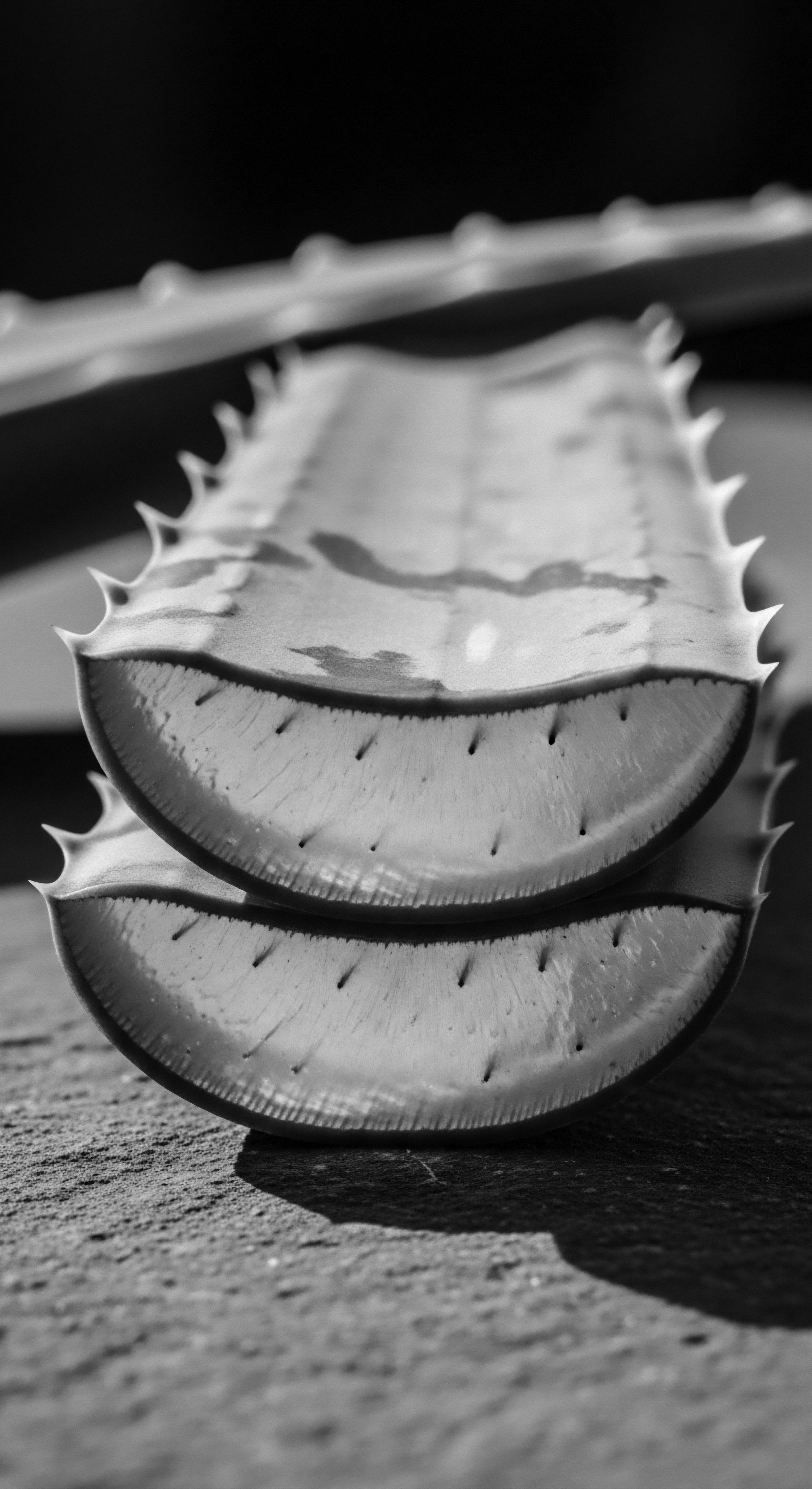
Hair Anatomy and Its Ancestral Connection
The varied textures within the spectrum of Black and mixed-race hair—from loose waves to tightly wound coils—share a common thread in their need for careful hydration. The natural oils produced by the scalp, known as sebum, travel down the hair shaft. For straight hair, this journey is often unimpeded, allowing sebum to coat the entire strand. For coiled hair, the path is circuitous; the twists and turns hinder the smooth descent of sebum, often leaving the ends feeling dry and susceptible to environmental challenges.
This biological reality made ancestral communities acutely aware of the need to supplement the hair’s own protective mechanisms. They sought external balms, drawing from local flora.
Consider the structure ❉ the Cortex, the inner strength of the hair, composed of keratin proteins; the Medulla, the innermost core, sometimes absent in finer hair; and the Cuticle, the outermost shield. Oils interact with these layers in various ways. Some, like coconut oil, possess molecular structures small enough to penetrate the hair shaft, moving beyond the cuticle to support the cortex from within, thus reducing water absorption and loss.
Others, often thicker and more viscous, form a surface barrier. This duality of action—some oils strengthening from within, others shielding from without—was perhaps not articulated in modern scientific terms by our ancestors, but its effects were certainly observed and prized.
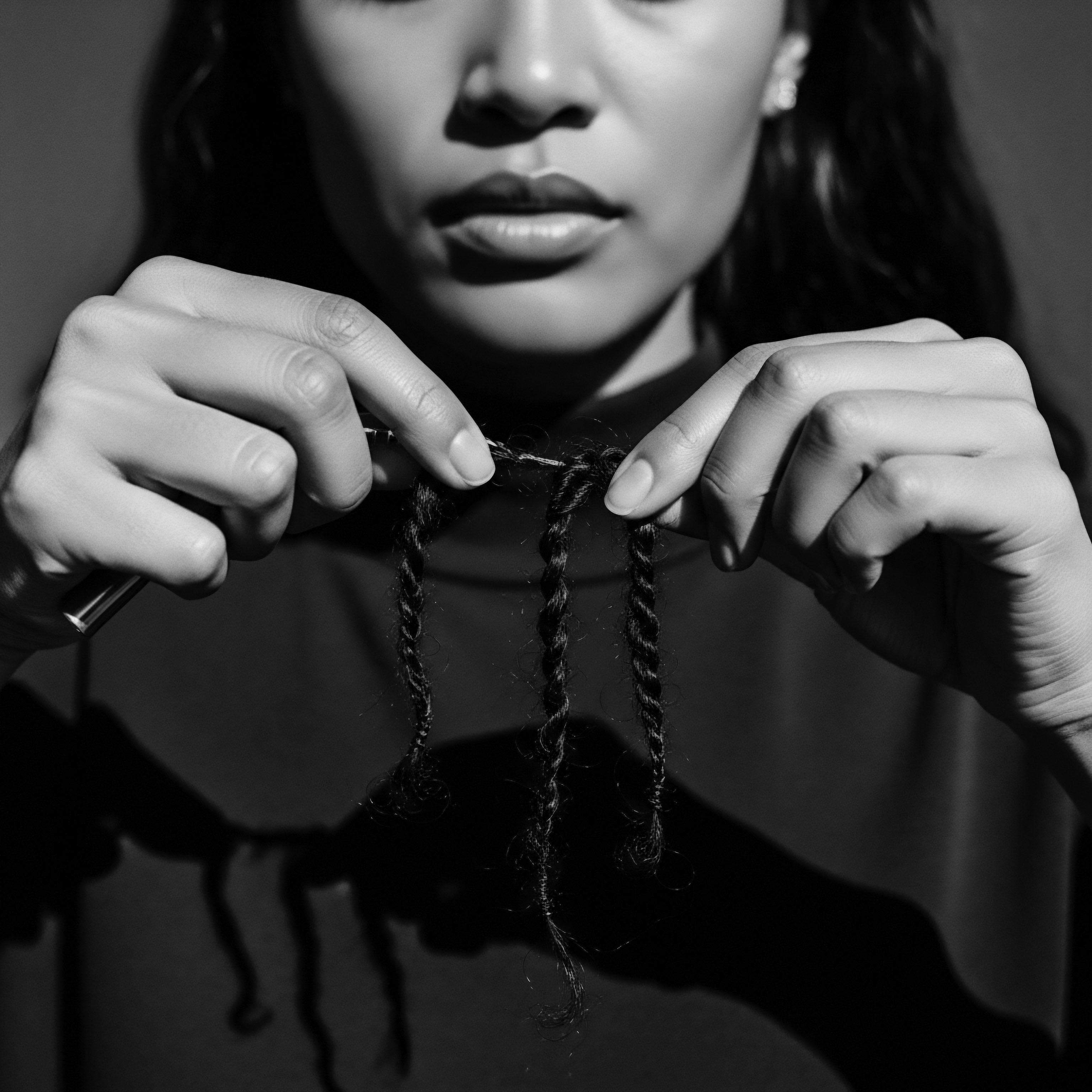
Traditional Hair Care Lexicon and Its Wisdom
The language surrounding textured hair care carries the echoes of historical understanding. Terms like “sealing” and “oiling” are not new; they stem from practices long predating commercial products. Traditional names for various plant extracts often spoke directly to their function or their spiritual significance. For instance, in many West African languages, words describing shea butter might also connote protection, sustenance, or a blessing.
These linguistic ties hint at a holistic worldview where hair care transcended mere appearance, touching upon health, communal well-being, and a reverence for the land. Understanding this lexicon permits us to grasp the cultural depth of these traditions.
What particular traditional oils offer historical insights?
Throughout African history, a variety of oils and butters formed the bedrock of hair preservation. Their selection was often localized, reflecting the botanical diversity of different regions. These oils were valued for their ability to keep hair supple, reduce tangling, and protect against environmental elements.
Their consistent application was a vital aspect of hair health and often a communal practice. The collective knowledge about these substances represents a sophisticated traditional pharmacology.
| Traditional Oil/Butter Shea Butter (Vitellaria paradoxa) |
| Primary Source Region West and East Africa |
| Observed Hair Benefits (Ancestral View) Protection from sun and wind; keeps hair soft and prevents breakage. |
| Modern Scientific Link to Moisture Retention High in fatty acids, forming an occlusive barrier that reduces trans-epidermal water loss (TEWL). Biénabe & Gourlet-Fleury (2007) discuss its rich heritage and economic importance, which implicitly includes its traditional use for skin and hair. |
| Traditional Oil/Butter Palm Kernel Oil (Elaeis guineensis) |
| Primary Source Region West and Central Africa |
| Observed Hair Benefits (Ancestral View) Hair conditioning, adding shine and preventing dryness. |
| Modern Scientific Link to Moisture Retention Rich in saturated and unsaturated fatty acids, acts as an emollient and occlusive agent. |
| Traditional Oil/Butter Castor Oil (Ricinus communis) |
| Primary Source Region Eastern Africa, India, Caribbean (diaspora) |
| Observed Hair Benefits (Ancestral View) Thickens hair, adds shine, conditions scalp, prevents drying. |
| Modern Scientific Link to Moisture Retention High viscosity, acts as a humectant and occlusive barrier, drawing moisture to the hair and then sealing it. |
| Traditional Oil/Butter These ancestral practices demonstrate an intuitive understanding of lipid chemistry, applying oils for both external shielding and internal nourishment of hair strands. |
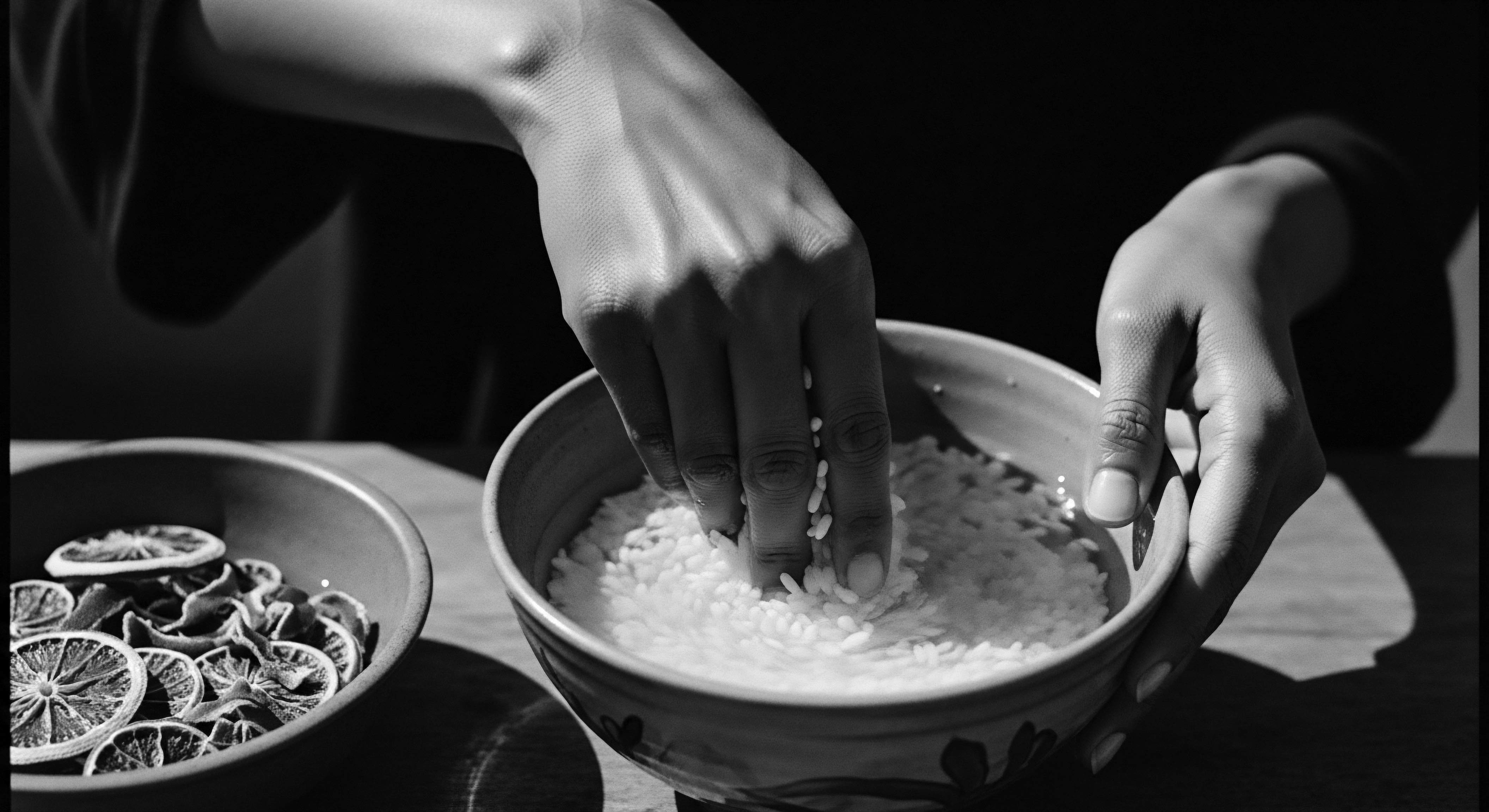
Hair Growth Cycles and Historical Influences
The journey of a hair strand, from its emergence to its eventual shedding, is a cycle influenced by genetics, nutrition, and environmental factors. For our ancestors, environmental conditions often posed challenges. Sun, dust, and arid climates could strip hair of its natural moisture. The consistent application of oils was a strategic response to these environmental stressors.
It served as a shield, allowing hair to complete its natural growth cycle with greater integrity, preventing premature breakage that might otherwise halt length retention. This deep practicality, born of observation and necessity, underscores the foundational role of oils in preserving hair health over time.

Ritual
The application of oils to textured hair moved beyond simple utility; it blossomed into a rich tapestry of communal rites, personal expressions, and sophisticated styling methods. These practices, honed over centuries, reveal an understanding of how oils contribute to not only the look, but the very health and longevity of hair. The act of oiling was rarely solitary; it often involved family members, particularly women, engaged in a collective endeavor of care, conversation, and the transmission of knowledge. These rituals, whether daily self-care or preparation for ceremonial events, speak to the profound cultural weight placed upon hair.
Styling textured hair, in its countless forms, from intricate braids to elaborate twists, relies heavily on the malleability and protection that oils provide. Without them, coiled strands could become brittle, resistant to manipulation, and prone to breakage. Oils act as a gentle lubricator, reducing friction during styling, thereby preserving the strand’s integrity.
Their ability to coat the hair shaft also contributes to its elasticity, permitting greater flexibility and reducing stress from tension. This synergy between oil and styling methods represents a continuous line of practical wisdom, a living testament to ancestral inventiveness.
Oils served as essential tools within ancestral styling rituals, providing the suppleness and protection needed for intricate hair artistry.
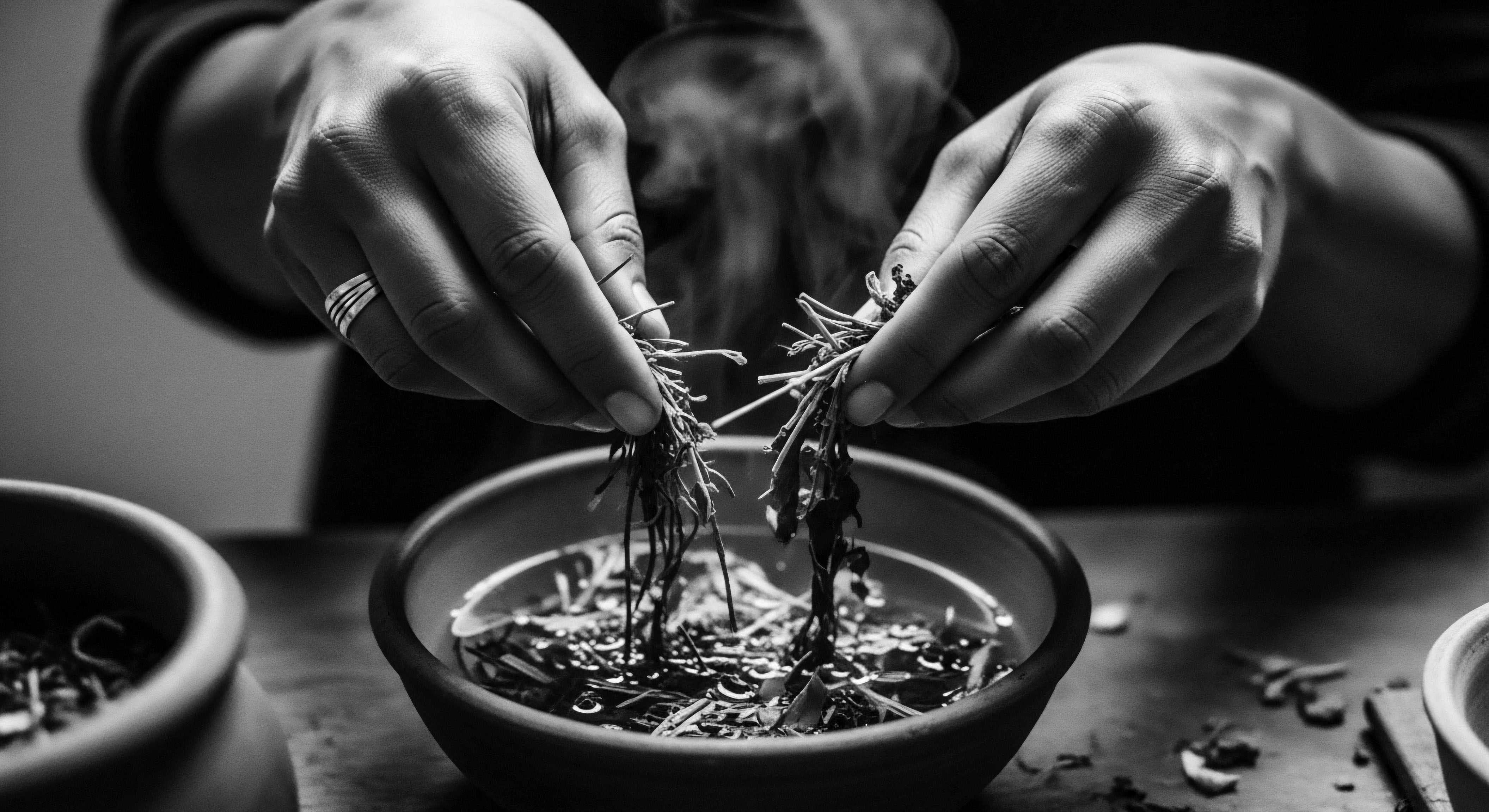
Protective Styling and Its Ancestral Roots
Protective styles—braids, twists, cornrows, and various forms of updos—are not recent trends; they are echoes of ancient African ingenuity. These styles were devised to shield hair from environmental damage, reduce daily manipulation, and aid in length retention. The success of these styles, particularly their ability to keep hair moisturized and resilient over prolonged periods, depended considerably on the preparatory and ongoing application of oils.
Before braiding, strands would be thoroughly oiled, often with mixtures of specific plant-based extracts. This pre-treatment coated the hair, sealing in the water from washing and conditioning, ensuring that as the hair was manipulated into its protective form, it remained pliable and shielded from moisture loss.
In many West African societies, for example, the widespread use of oils like Shea Butter or Palm Kernel Oil was integral to preparing hair for long-term styles. These traditions were not merely aesthetic; they were a pragmatic response to environmental challenges, safeguarding the hair during daily activities or long journeys. Biénabe and Gourlet-Fleury (2007) highlight the significance of shea butter as a substance deeply embedded in local economies and cultural practices across the Sahelian and Sudanian zones of Africa, its traditional applications spanning food, medicine, and indeed, cosmetics for skin and hair.
This speaks to a historical continuity where its occlusive properties were instinctively understood as beneficial for maintaining hair integrity, particularly for protective styles that would remain untouched for weeks. The hair, once intricately styled and oiled, could resist the drying effects of wind and sun, thus retaining its internal moisture.
- Braiding Oils ❉ Traditionally, specific oil concoctions were used to lubricate hair during braiding, preventing friction and breakage.
- Twist-Out Enhancers ❉ Oils applied before twisting helped to define curls and seal moisture within the resulting style.
- Scalp Treatments ❉ Oils often massaged into the scalp served to nourish the skin beneath protective styles, supporting overall hair vitality.
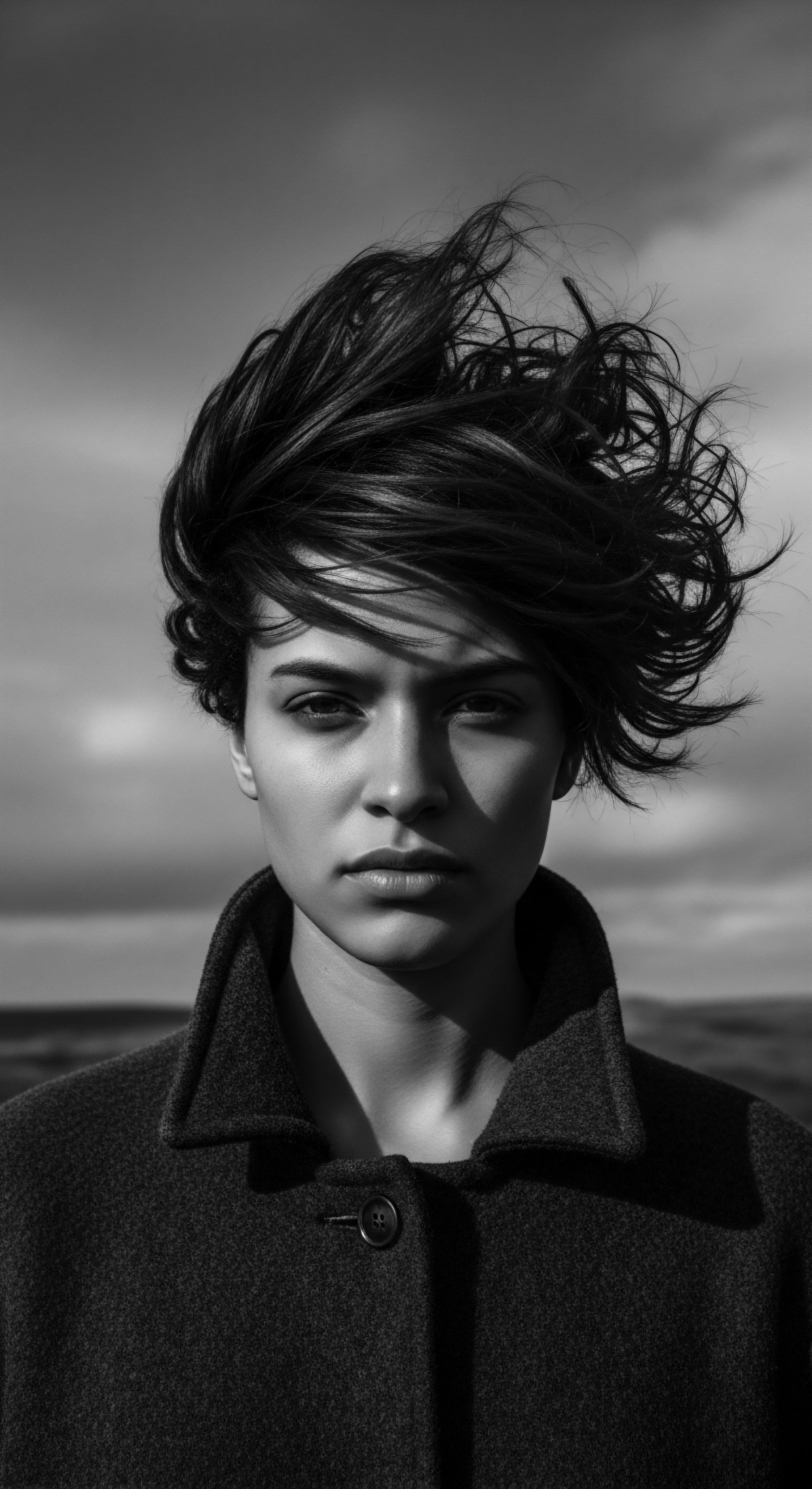
Natural Styling and Definition Techniques
Defining the natural curl pattern of textured hair, whether through wash-and-gos, coils, or finger waves, also benefits greatly from the judicious use of oils. When hair is wet, water molecules hydrate the keratin. Oils, particularly those with a film-forming capacity, can then be applied to “lock in” this hydration. This process prevents the water from evaporating too quickly, allowing the natural curl to dry in a defined state, rather than frizzing.
This effect was achieved through ancient methods of layering ingredients. First, water would be used to hydrate, perhaps from a natural spring, then a plant-based mucilage or a conditioning rinse, and finally, a rich oil or butter would be smoothed onto the strands.
In certain Caribbean traditions, for example, a paste made from natural plant ingredients, combined with oils, might have been used to set curls or waves. The oil within these preparations provided both slip for manipulation and a sealant for moisture. This layered approach to hair definition, where hydration is introduced and then preserved, is an ancestral precursor to modern concepts like the “LOC method” (Liquid, Oil, Cream), illustrating how contemporary techniques often echo long-standing wisdom regarding moisture preservation.
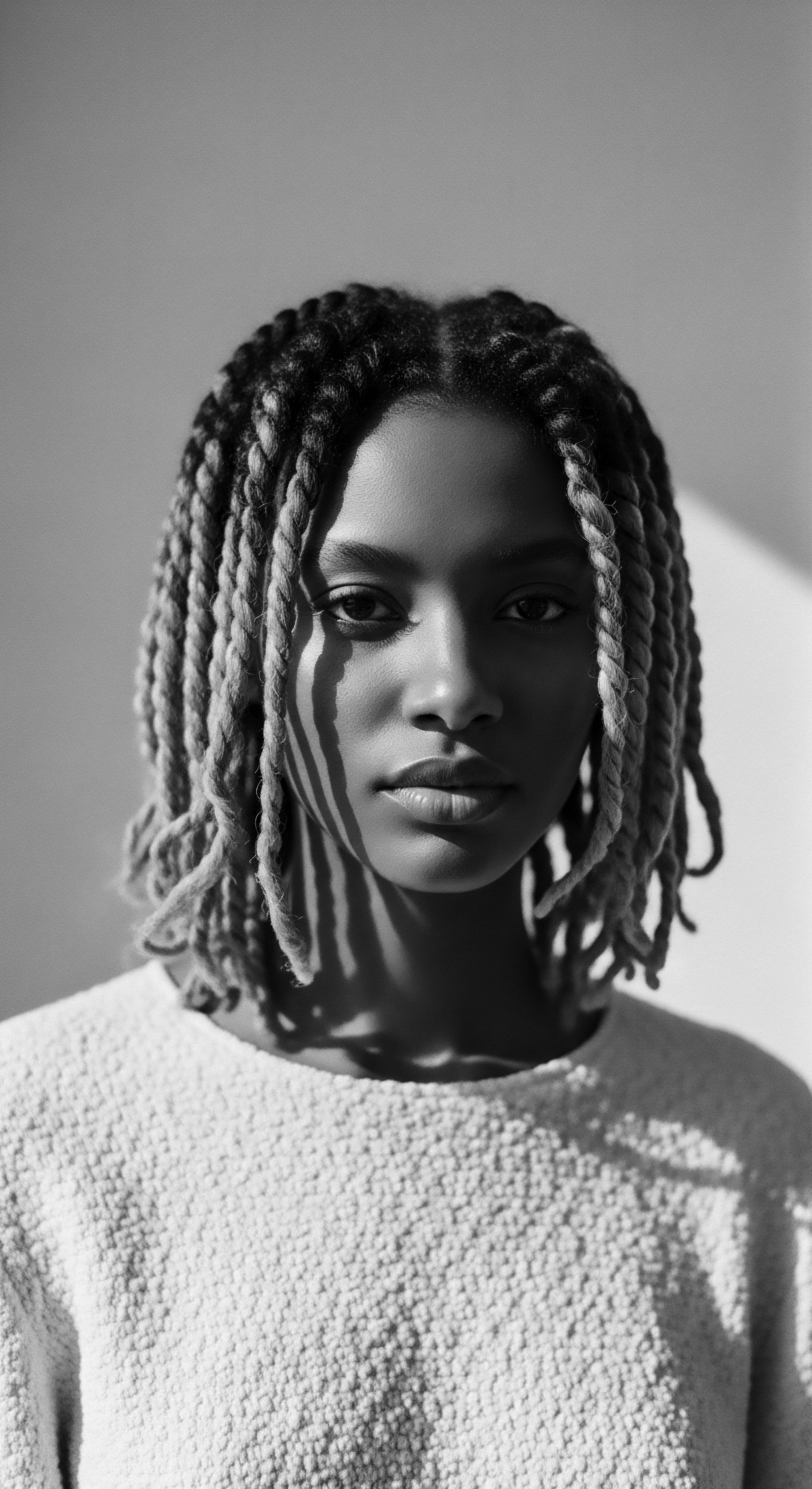
The Complete Textured Hair Toolkit
The tools of textured hair care, from wide-tooth combs carved from wood or bone to various implements for sectioning and adornment, were complemented by the essential presence of oils. These oils, stored in calabashes or clay pots, were as fundamental as the tools themselves. They lubricated the comb’s passage through tangled strands, minimizing stress and preventing mechanical damage that could lead to moisture loss through fractured cuticles.
The choice of oil often depended on its viscosity and absorption rate, guiding its application during different phases of styling. A lighter oil might be used for daily gloss, while a heavier butter would be reserved for pre-braiding or deep conditioning, demonstrating a practical understanding of oil properties and their moisture-preserving capabilities.
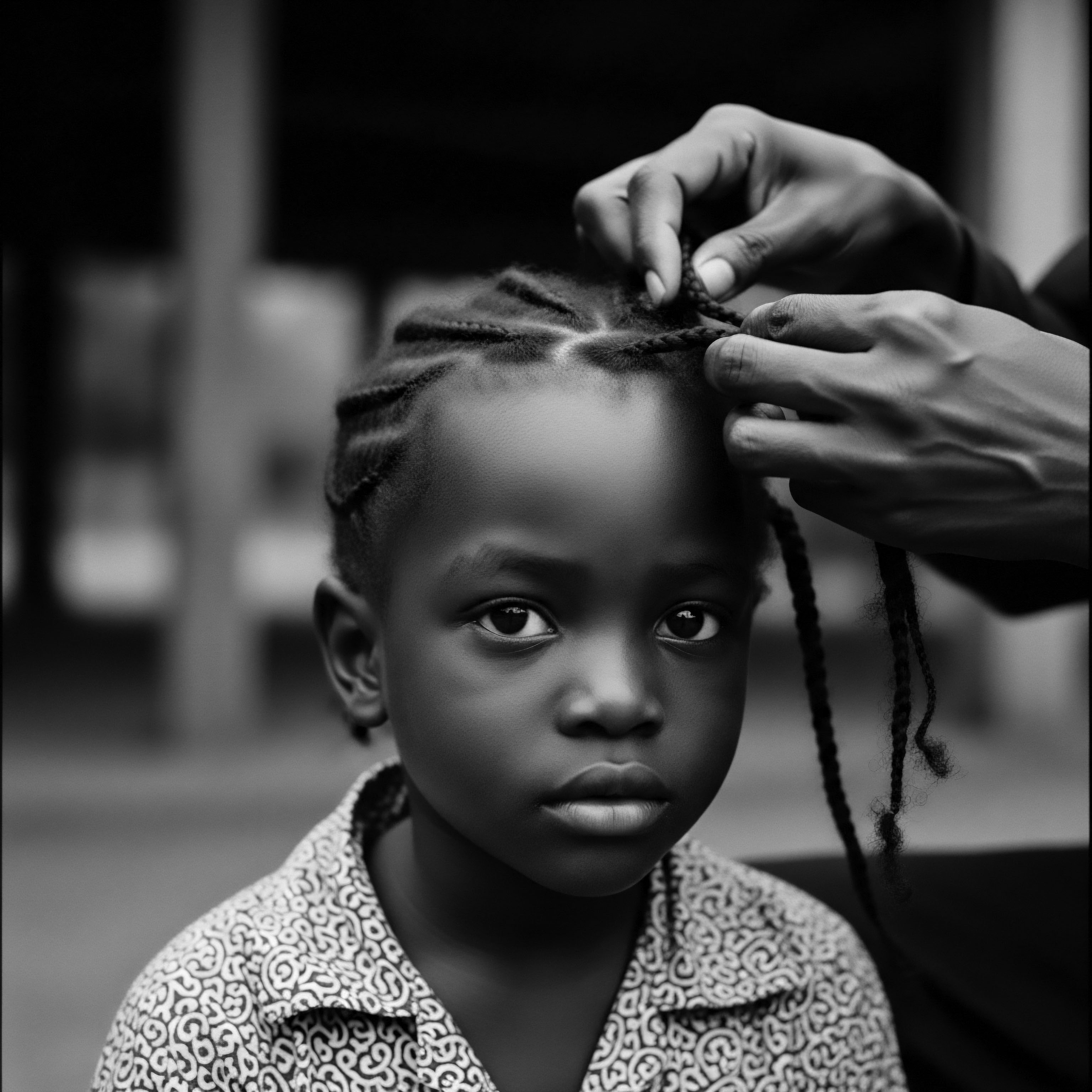
Relay
The heritage of textured hair care extends beyond styling; it encompasses a holistic regimen, a daily dedication to wellness that acknowledges the hair as an extension of the self. Oils stand as central figures in this comprehensive approach, not merely as temporary solutions, but as foundational elements supporting sustained hair health and moisture retention. The wisdom of previous generations understood that continuous care, particularly the restorative practices performed during nighttime hours, cemented the integrity and vitality of the hair. This persistent attention to detail, passed through families, has shaped contemporary understanding of hair preservation.
The dialogue between ancestral knowledge and current scientific discovery presents a compelling narrative. Modern research frequently validates the efficacy of age-old practices, offering chemical explanations for what was once understood through intuition and observation. The role of oils in managing moisture, preventing hygral fatigue (the weakening of hair from repeated swelling and drying), and bolstering the hair’s natural barrier is a perfect illustration of this ongoing conversation. This scientific lens does not diminish the profound cultural meaning of these practices; rather, it deepens our appreciation for the scientific acumen embedded within traditional wisdom.

Building Personalized Regimens
A well-structured hair care routine for textured hair, today as in eras past, centers on maintaining optimal moisture levels. Oils are indispensable components of such a regimen. Their utility ranges from pre-poo treatments (applied before shampoo to protect strands from excessive stripping) to post-wash sealants, and even as occasional refreshers between wash days. The ancestral habit of regularly anointing hair with oils, often after cleansing with natural saponins or water, directly mirrors the modern understanding of ‘layering’ products to seal in moisture.
This sequential application ensures that water, the primary hydrator, remains locked within the hair shaft, guarded by the occlusive layer of the oil. This layering strategy is not a contemporary marketing invention; it is a refined iteration of practices steeped in generations of learned success.
What are the key ancestral insights guiding modern moisture routines?
Ancestral practices consistently prioritized protective actions for hair. This involved not only the choice of appropriate oils but also the systematic application and selection of low-manipulation styles. The consistent use of specific oils, tailored to individual needs and seasonal changes, reflects a personalized approach to care long before individualized beauty concepts became widely marketed. This deep understanding of hair’s dynamic needs forms a critical blueprint for developing modern regimens.
- Seasonal Oil Adjustments ❉ Traditional communities often adapted oil use based on climate – heavier oils for drier seasons, lighter ones for humidity.
- Oil Blending ❉ Ancestral practices frequently involved combining different oils and plant extracts to create custom formulations, recognizing their varied properties.
- Targeted Application ❉ Oils were often applied with precision to specific areas of the hair or scalp, addressing particular concerns like dryness or fragility.
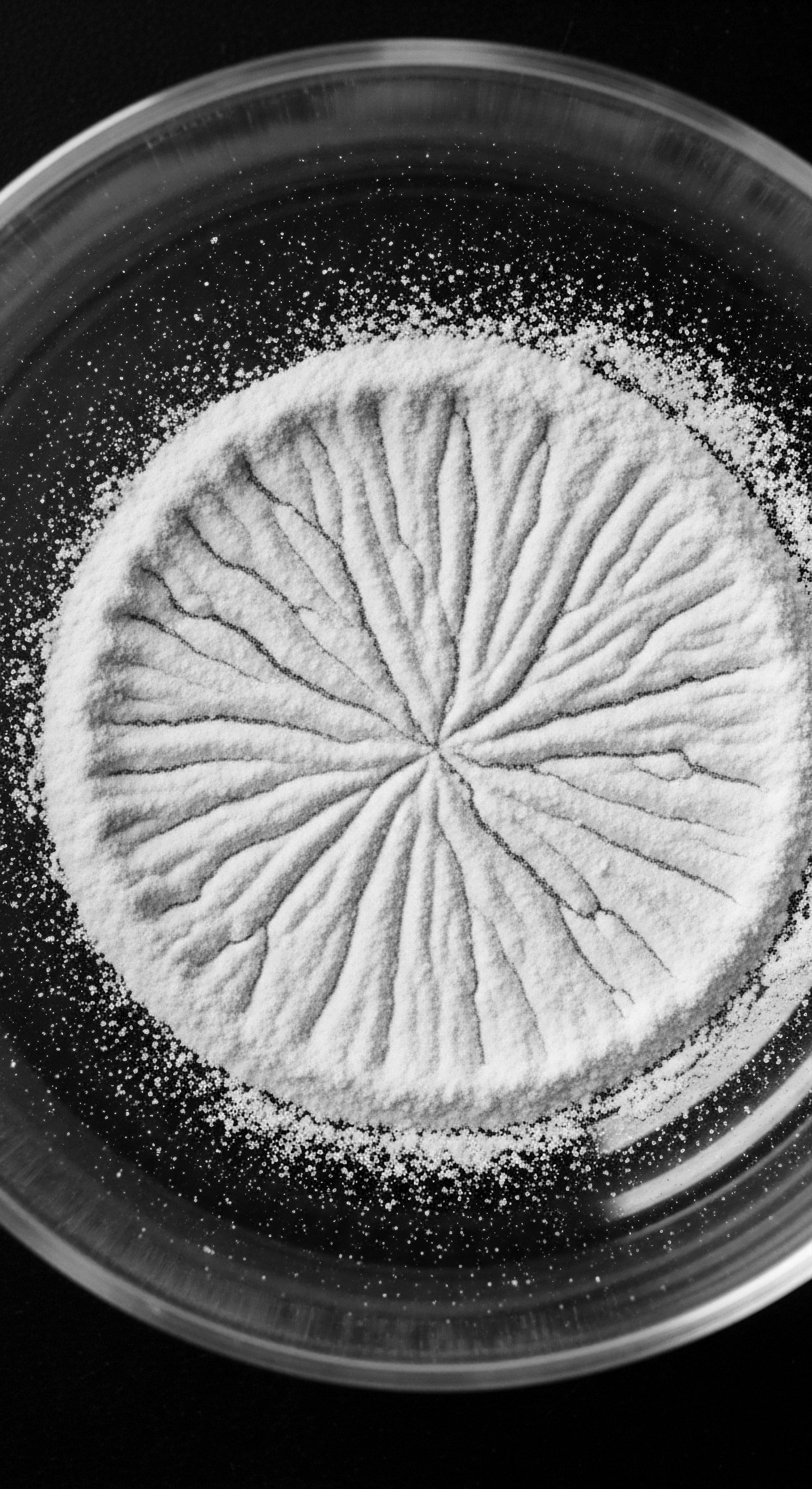
The Nighttime Sanctuary
The nighttime hours offer a crucial period for hair rejuvenation and moisture preservation, a wisdom understood and practiced in ancestral communities. Covering hair before sleep with natural fabrics like silk or satin, or utilizing plant-derived coverings, served a vital protective purpose. This practice minimizes friction against coarse bedding materials, which could otherwise strip moisture from the hair and lead to tangling and breakage. When hair is less stressed and its cuticle undisturbed overnight, the moisture sealed in with oils during the day or evening can remain contained.
The traditional “headwrap” or similar coverings, often worn for modesty or cultural expression, also served this pragmatic function, becoming an unwitting ally in the battle against moisture loss. This quiet nightly ritual, sustained through lineage, safeguards the integrity of coils and curls, allowing them to remain hydrated and resilient.
How did cultural practices influence nighttime hair care?
The enduring legacy of bonnets, headwraps, and various coverings in Black and mixed-race communities transcends simple aesthetics. These accessories are functional guardians, preserving styled hair and, critically, maintaining its moisture equilibrium. The smooth surface of silk or satin prevents absorption of moisture from the hair by the fabric, in contrast to cotton which can wick away essential hydration.
This protective sheath, a continuation of ancestral wisdom, allows oils applied to the hair to perform their sealing function without hindrance. This protective measure, combined with oil application, forms a powerful duo against nocturnal dehydration, supporting long-term hair health.
| Historical Nighttime Practice Hair Covering/Headwraps |
| Traditional Context or Purpose Modesty, cultural identity, practical protection from elements and dust during sleep. |
| Impact on Hair Moisture Retention (Heritage & Science) Reduced friction on rough sleeping surfaces, preventing cuticle damage and subsequent moisture loss. Maintained oil's occlusive barrier. |
| Historical Nighttime Practice Oil Application Before Sleep |
| Traditional Context or Purpose Daily anointing for conditioning, as part of grooming rituals, preparing for protection. |
| Impact on Hair Moisture Retention (Heritage & Science) Allowed oils to slowly penetrate or form a lasting seal, minimizing overnight water evaporation. Supported internal strand strength. |
| Historical Nighttime Practice Communal Braiding/Twisting |
| Traditional Context or Purpose Social bonding, preparation for long-lasting styles for the week ahead. |
| Impact on Hair Moisture Retention (Heritage & Science) Hair was often oiled before styling, and the style itself provided a protective structure, further preserving moisture by reducing exposure. |
| Historical Nighttime Practice The foresight of ancestral hair care ensured that even during rest, hair received protection, thus securing its hydration for the day ahead. |
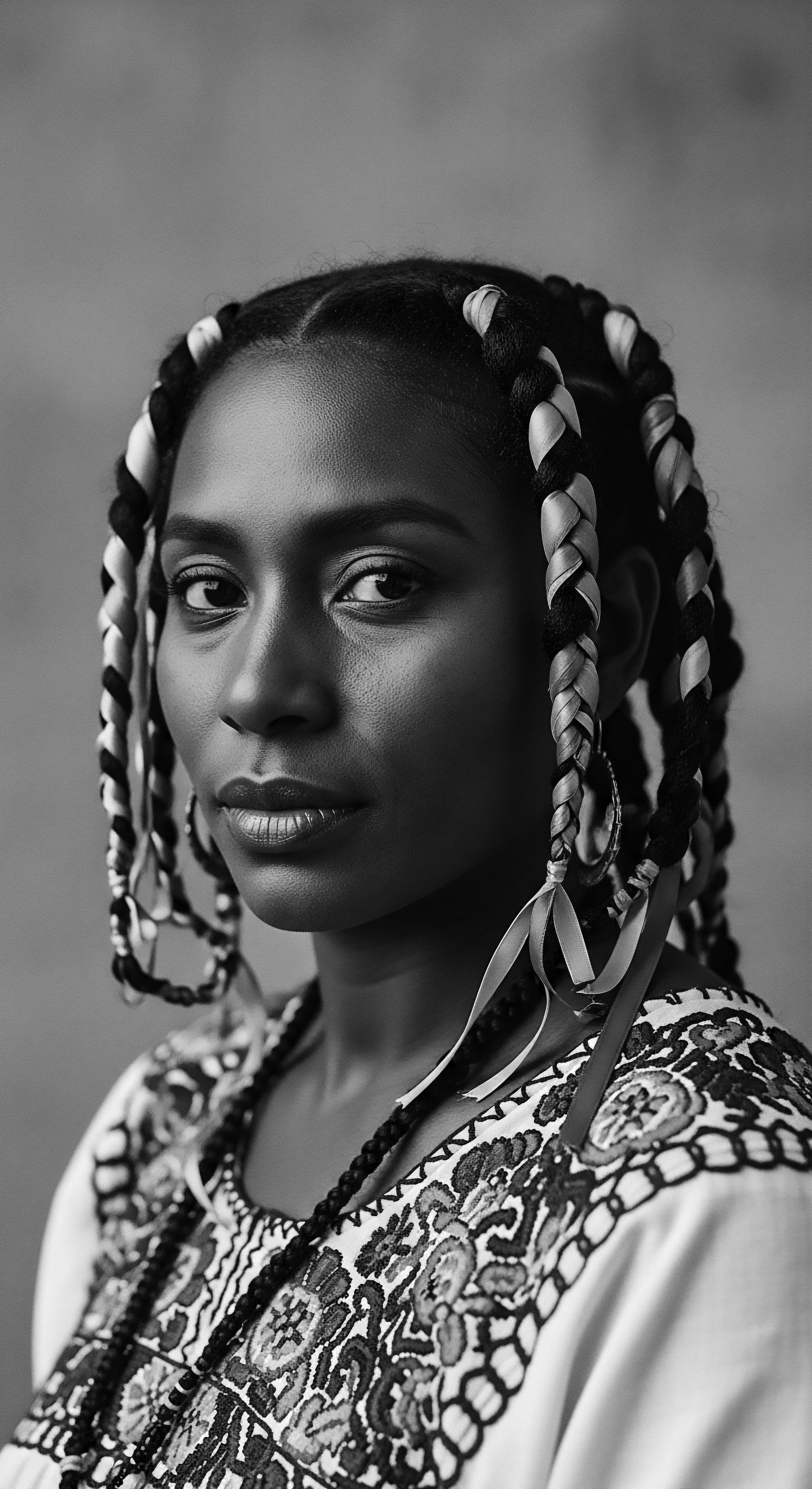
Ingredient Insights
The ancestral knowledge concerning botanical ingredients for hair care represents a sophisticated form of ethnobotany. Indigenous communities discovered and refined the use of specific plant oils based on their observed effects on hair. This empirical selection, passed down verbally and through demonstration, identified substances that were effective hydrators or sealants. For example, the recognition of shea butter ‘s ability to seal in moisture and provide environmental protection is a testament to centuries of observation.
The fatty acid composition of shea butter, rich in oleic and stearic acids, allows it to form a semi-occlusive layer on the hair shaft, retarding water evaporation (Biénabe & Gourlet-Fleury, 2007). This is a scientific validation of a heritage practice.
Consider the history of Castor Oil. Its distinctive viscosity and unique ricinoleic acid content have made it a treasured ingredient across the African diaspora. Its use in Jamaican Black Castor Oil, where the beans are roasted and boiled, yields a thick, dark oil highly prized for its purported ability to seal moisture, support hair strength, and encourage growth. This oil’s heavy, occlusive nature creates a formidable barrier against environmental dryness, keeping water locked within the hair, a characteristic deeply valued in ancestral practices aimed at length retention and hair integrity.
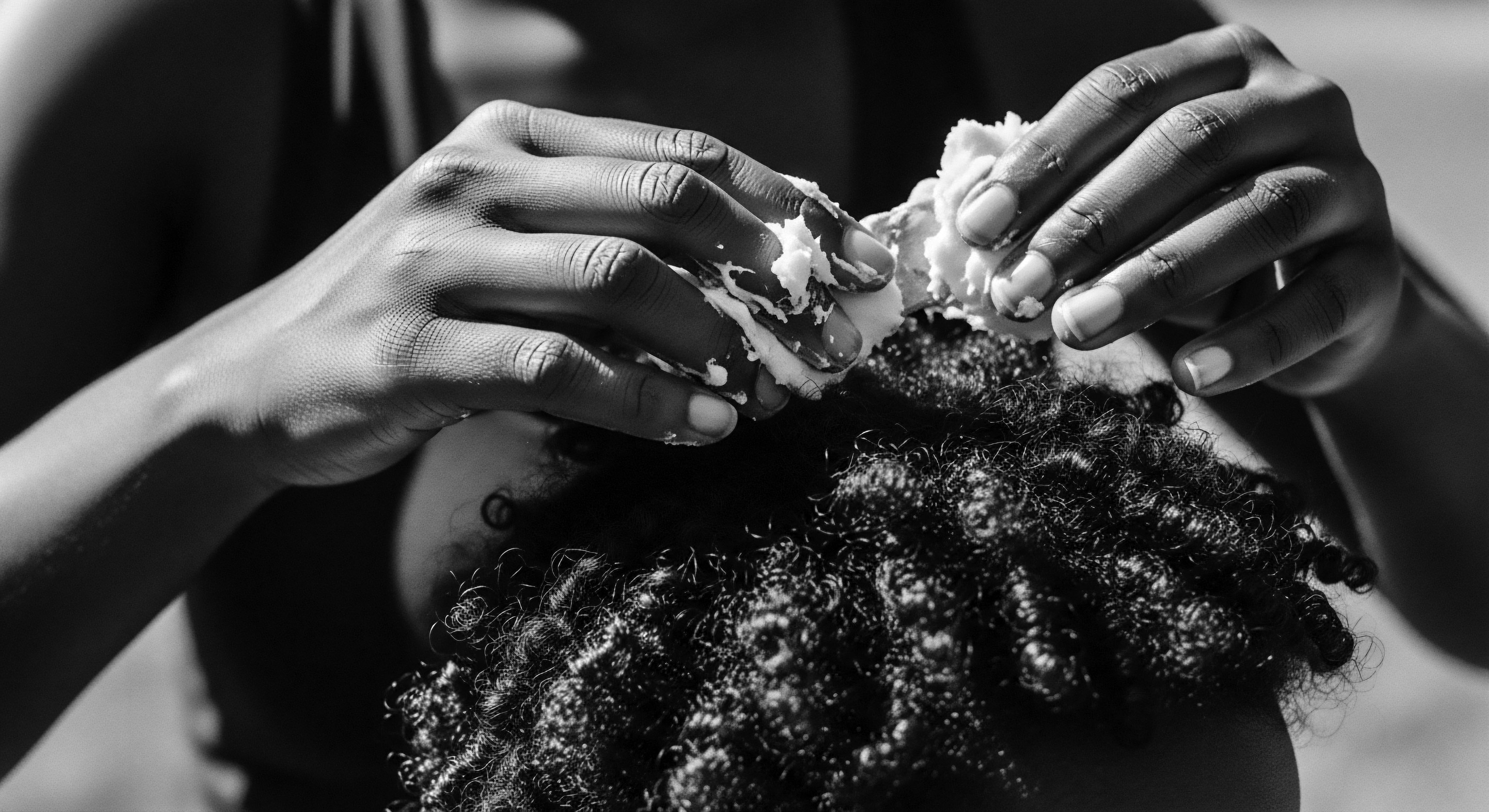
Addressing Hair Challenges with Heritage
Issues such as dryness, breakage, and scalp irritation, common concerns for textured hair today, were also addressed through ancestral wisdom. Oils often played a primary role in these solutions. For dryness, the direct application of rich, emollient oils was the immediate answer. For breakage, oils were understood to add suppleness, reducing brittleness and the friction that leads to snapping strands.
Scalp health, fundamental to vibrant hair, was also supported by certain oils, often infused with herbs, applied with gentle massage. This integrated approach, drawing on the restorative properties of natural oils, reveals a continuity in how textured hair challenges have been met across time, always with a view towards preserving the inherent strength and beauty of the strand.
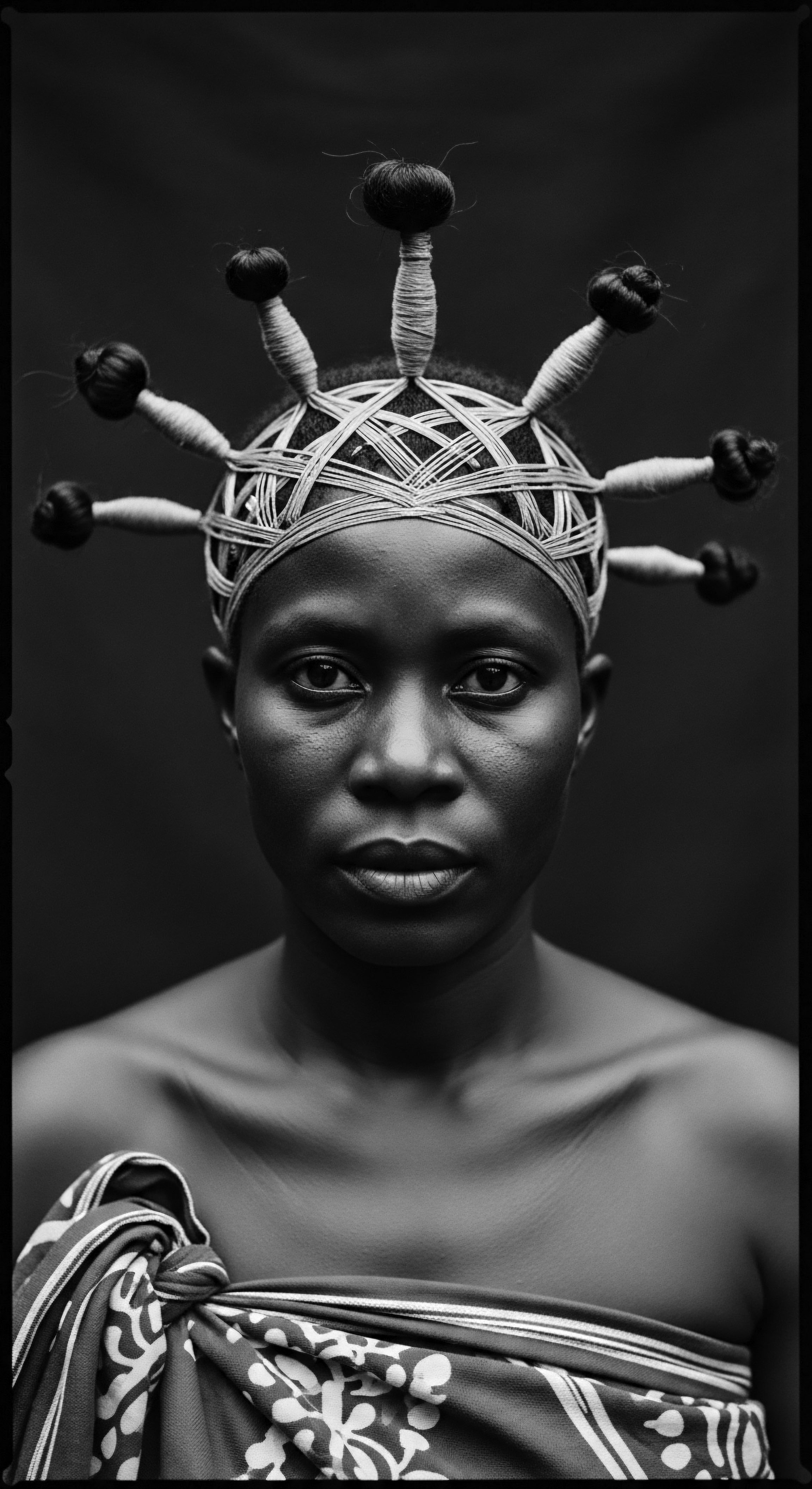
Reflection
The journey through the question of how oils affect hair moisture retention for textured hair unfurls a compelling story, one that is deeply woven into the fabric of human resilience and cultural identity. It is a story not just of chemistry and biology, but of whispered wisdom, communal care, and the enduring connection between people and the plants that sustained them. From the earliest observations of nature’s bounty to the sophisticated understanding gained through modern science, the consistent thread remains ❉ oils are guardians of moisture, essential allies in the preservation of textured hair’s innate vitality.
The ancestral traditions of hair oiling, whether in the sun-drenched savannas of West Africa, the humid islands of the Caribbean, or the bustling cities of the diaspora, speak to a knowledge that ran deeper than superficial beauty. They tell of pragmatic responses to environmental challenges, of self-care as an act of cultural preservation, and of hair as a profound marker of heritage and spirit. The persistent use of oils for moisture retention across these diverse geographies stands as a testament to their timeless efficacy and symbolic importance.
Our textured strands, living archives themselves, continue to relay these ancient lessons, inviting us to honor the methods that have protected and adorned generations. To anoint our coils and curls with oils is to partake in a living legacy, a continuous conversation with those who came before us, ensuring the radiant journey of each strand continues, unbound by time or circumstance.
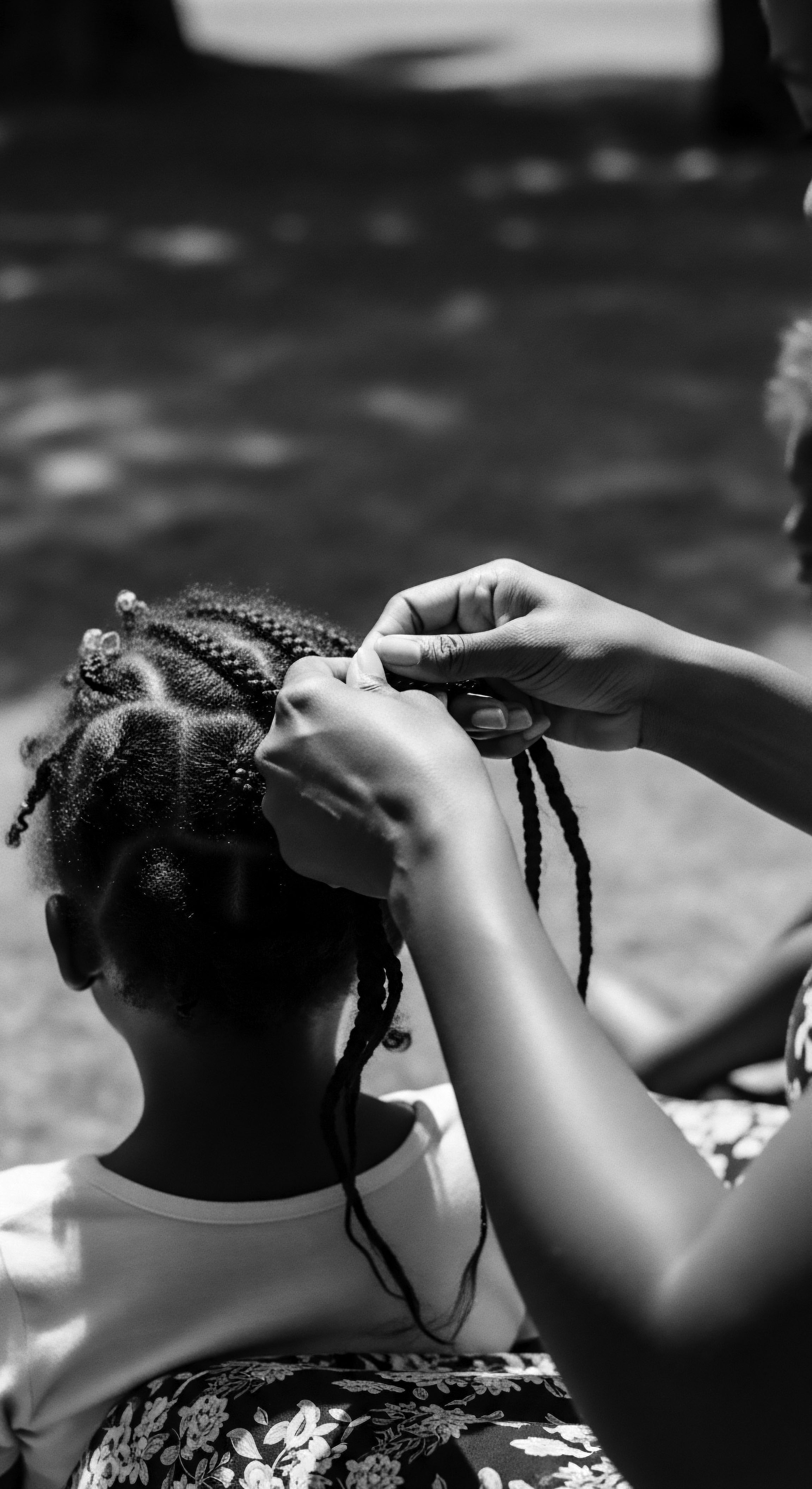
References
- Biénabe, E. & Gourlet-Fleury, S. (2007). Shea Butter ❉ A Rich Heritage. Forests, Trees and Livelihoods, 17(4), 303-316.
- Mitchell, H. A. (2017). Hair Story ❉ Untangling the Roots of Black Hair in America. St. Martin’s Press.
- Marsh, J. M. & R. R. Gray. (2015). Hair Care ❉ Product and Ingredient Chemistry. CRC Press.
- Robbins, C. R. (2012). Chemical and Physical Behavior of Human Hair. Springer.
- Draelos, Z. D. (2011). Hair Cosmetics ❉ An Overview. Journal of Cosmetic Dermatology, 10(3), 226-231.
